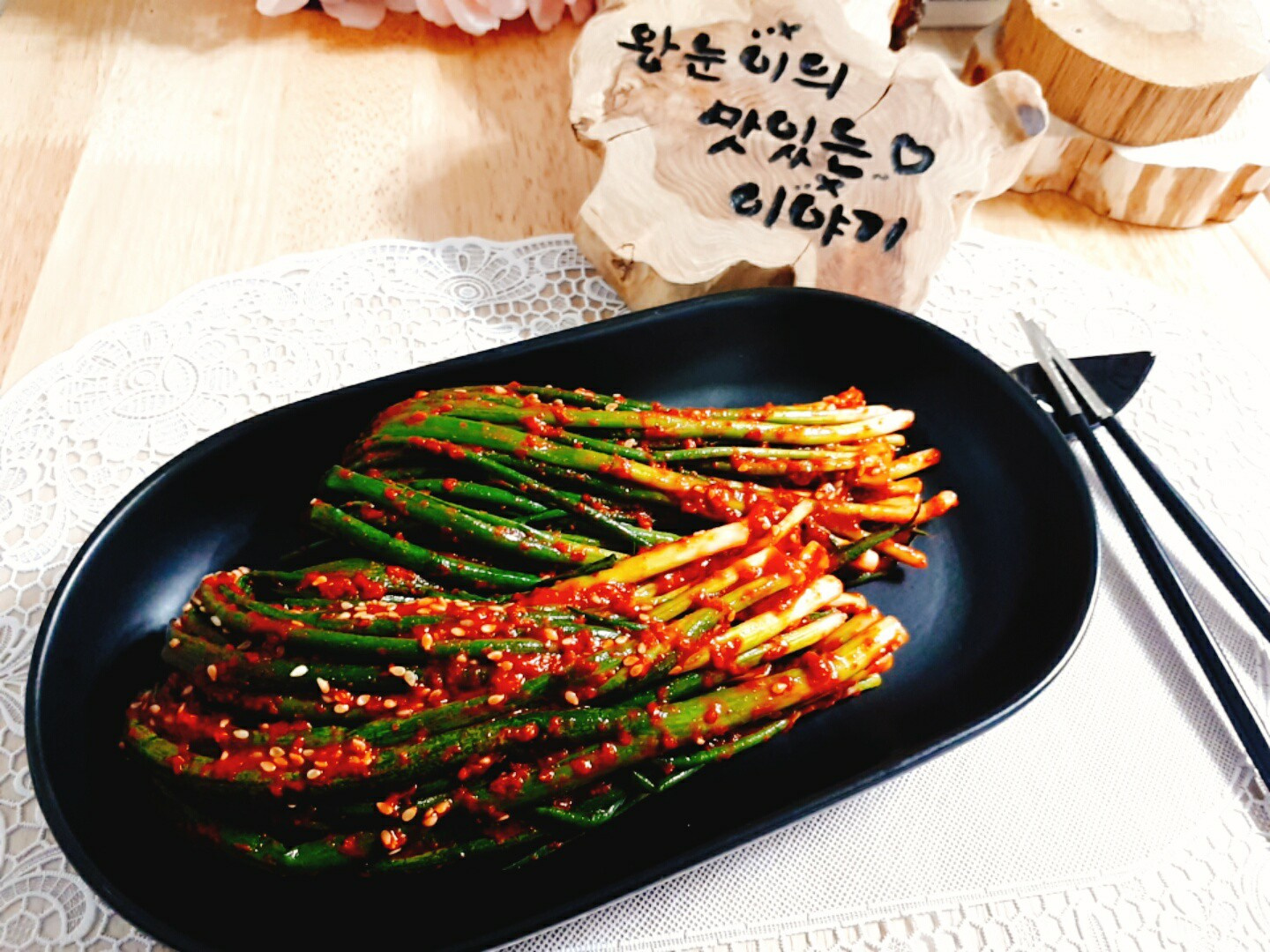Chewy Young Scallion Kimchi
A Unique Kimchi! Make Tangy Young Scallion (Baby Green Onion) Kimchi!

Try making a simple and easy kimchi with young scallions or baby green onions, a delightful change from typical green onion kimchi! Its crisp texture and savory flavor are exceptional.
Ingredients- 1 bunch young scallions or baby green onions (approx. 250-300g)
- 2 cups glutinous rice flour paste (made by boiling 2 Tbsp rice flour with 2 cups water)
Seasoning- 8 Tbsp fish sauce (or anchovy sauce)
- 8-10 Tbsp red pepper flakes (adjust to taste)
- 1/3 tspニューシュガー (Nüshātáng) or sugar (adjust sweetness)
- 1 tsp salt (for brining or seasoning adjustment)
- 2 Tbsp toasted sesame seeds
- 8 Tbsp fish sauce (or anchovy sauce)
- 8-10 Tbsp red pepper flakes (adjust to taste)
- 1/3 tspニューシュガー (Nüshātáng) or sugar (adjust sweetness)
- 1 tsp salt (for brining or seasoning adjustment)
- 2 Tbsp toasted sesame seeds
Cooking Instructions
Step 1
Prepare one bunch of fresh young scallions or baby green onions. Trim off the roots cleanly, and remove any yellowed leaves or outer peels for a neat appearance. This step ensures the kimchi looks and tastes better.

Step 2
Wash the prepared young scallions thoroughly under cold running water. Soaking them for about 10 minutes and then gently swishing them helps remove dirt and debris effectively. Rinse multiple times until clean.

Step 3
After washing, drain the young scallions well on a colander, laying them out without overlapping. Proper draining prevents the kimchi from becoming watery and ensures the seasoning adheres well for better fermentation.

Step 4
While the scallions are draining, let’s make the delicious seasoning. In a bowl, combine the fish sauce, red pepper flakes, and Nüshātáng (or sugar). Mix them well and let sit for 5-10 minutes to allow the red pepper flakes to fully absorb the liquid and develop their color. Then, add the prepared glutinous rice flour paste and mix thoroughly. (Tip: My rice paste isn’t pure white because I added 1-2 Tbsp of fish sauce while boiling the glutinous rice flour. This adds a deeper flavor.)

Step 5
Since the young scallions are not brined beforehand, the seasoning should be slightly salty. If the fish sauce alone isn’t salty enough, add a little salt to adjust the taste. (Important: Feel free to adjust the saltiness and sweetness according to your personal preference.)

Step 6
Now it’s time to coat the young scallions with the seasoning. Take a handful of scallions and generously apply the seasoning to the white, root end first. Then, use the remaining seasoning on your hands to gently brush it up towards the green leaves. It’s crucial to ensure the seasoning is evenly distributed throughout the scallions.

Step 7
You can gather the seasoned scallions into small bundles by twisting them, which makes them neat for storage, but this step can be skipped if you find it too much work. I chose to mix them directly in the container. Place the scallions layer by layer in a kimchi container that’s roughly the length of the scallions, pressing down lightly to help the seasoning penetrate.

Step 8
When packing the kimchi into the container, alternating the root ends and leafy ends in opposite directions can help utilize space efficiently and make it look attractive. Finally, sprinkle a generous amount of toasted sesame seeds on top to finish. Let the kimchi sit at room temperature for 1-2 days to ferment. If you prefer a tangier taste, leave it at room temperature for an additional 3-4 days, taste it, and then refrigerate for further aging. Enjoy!




